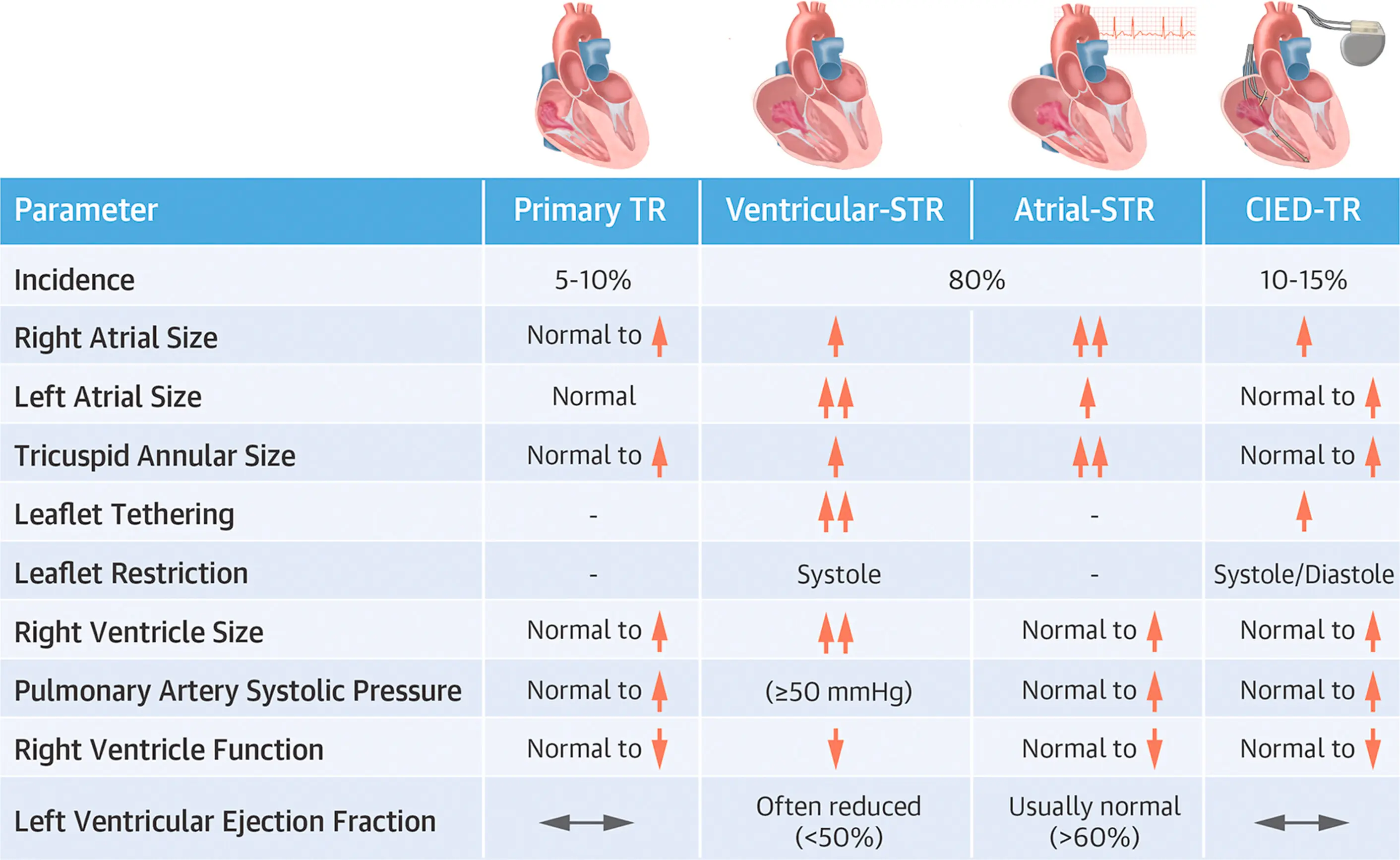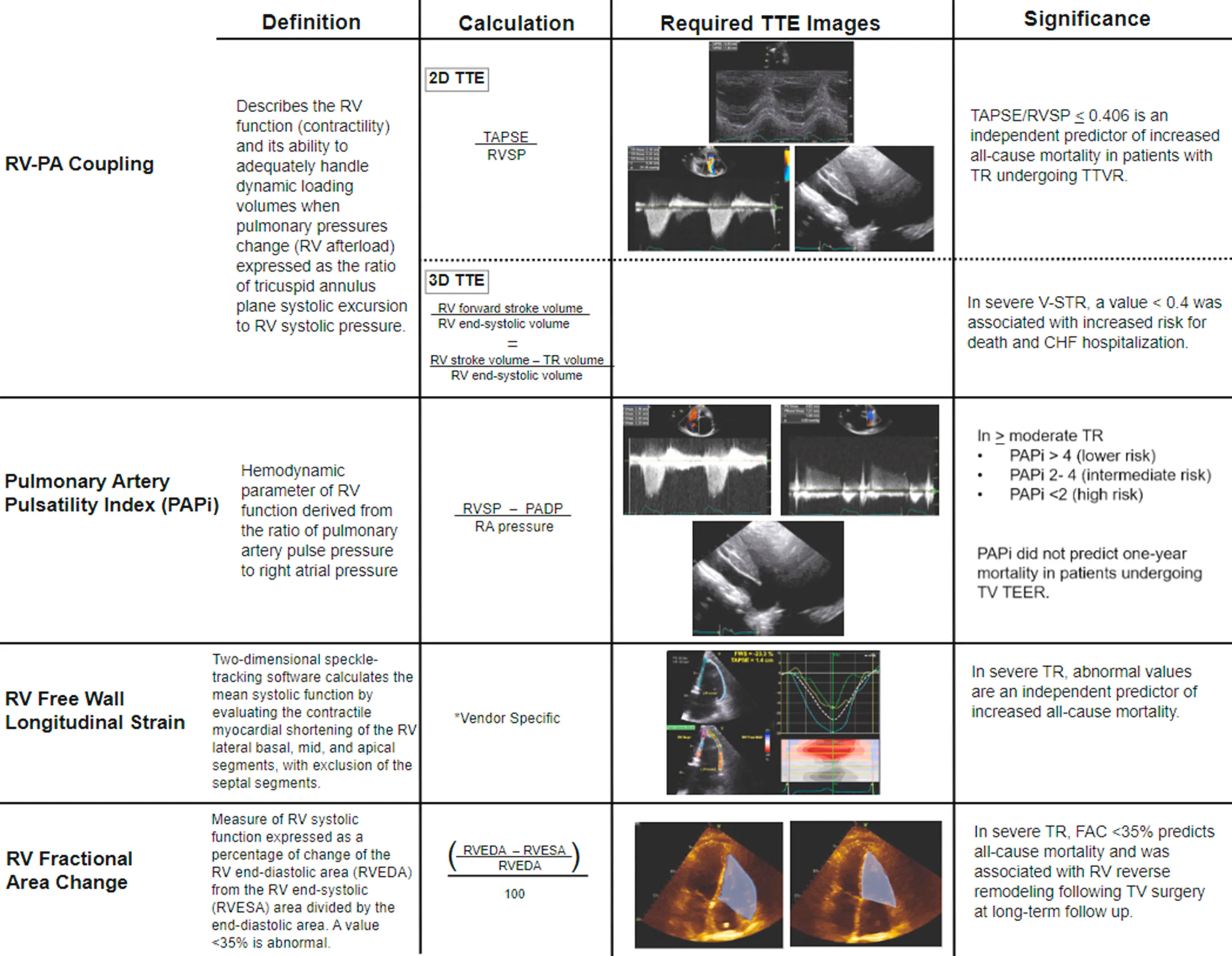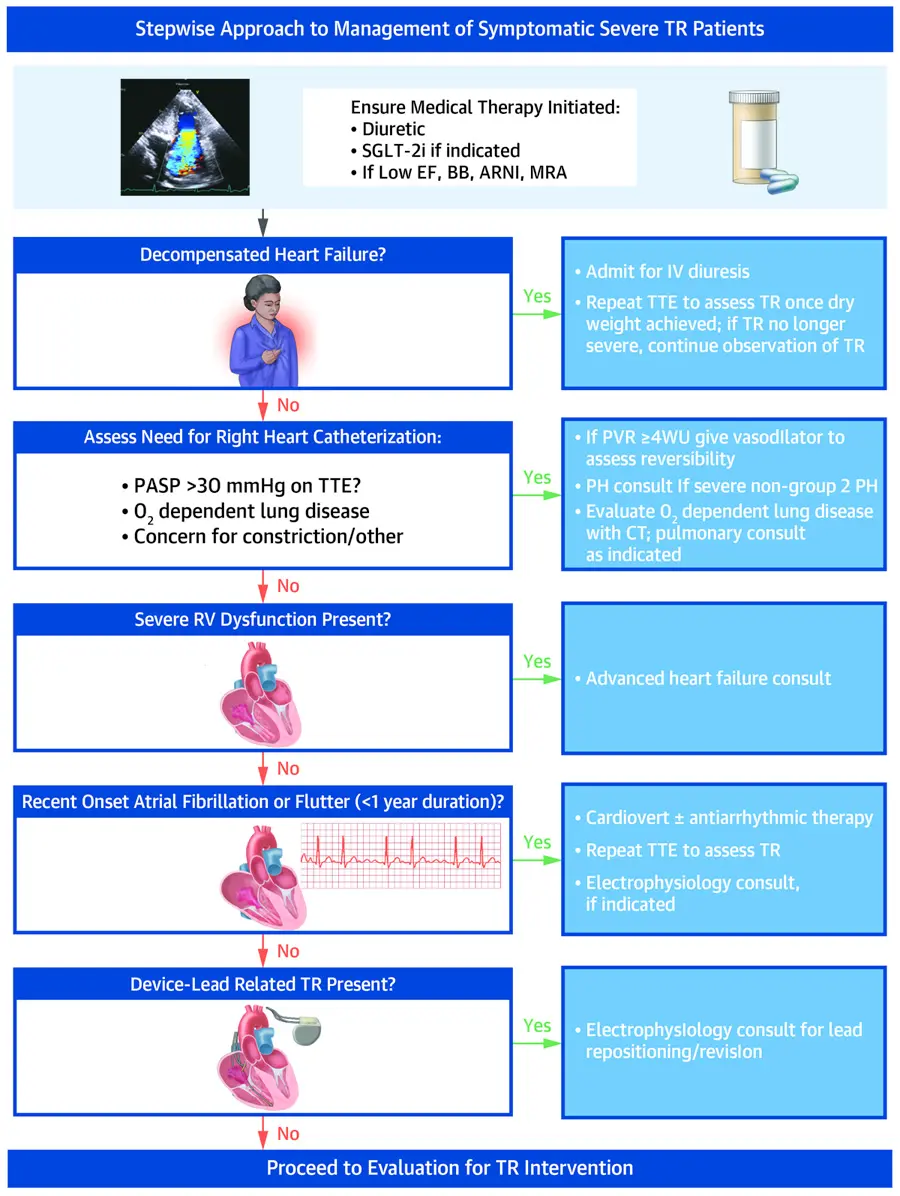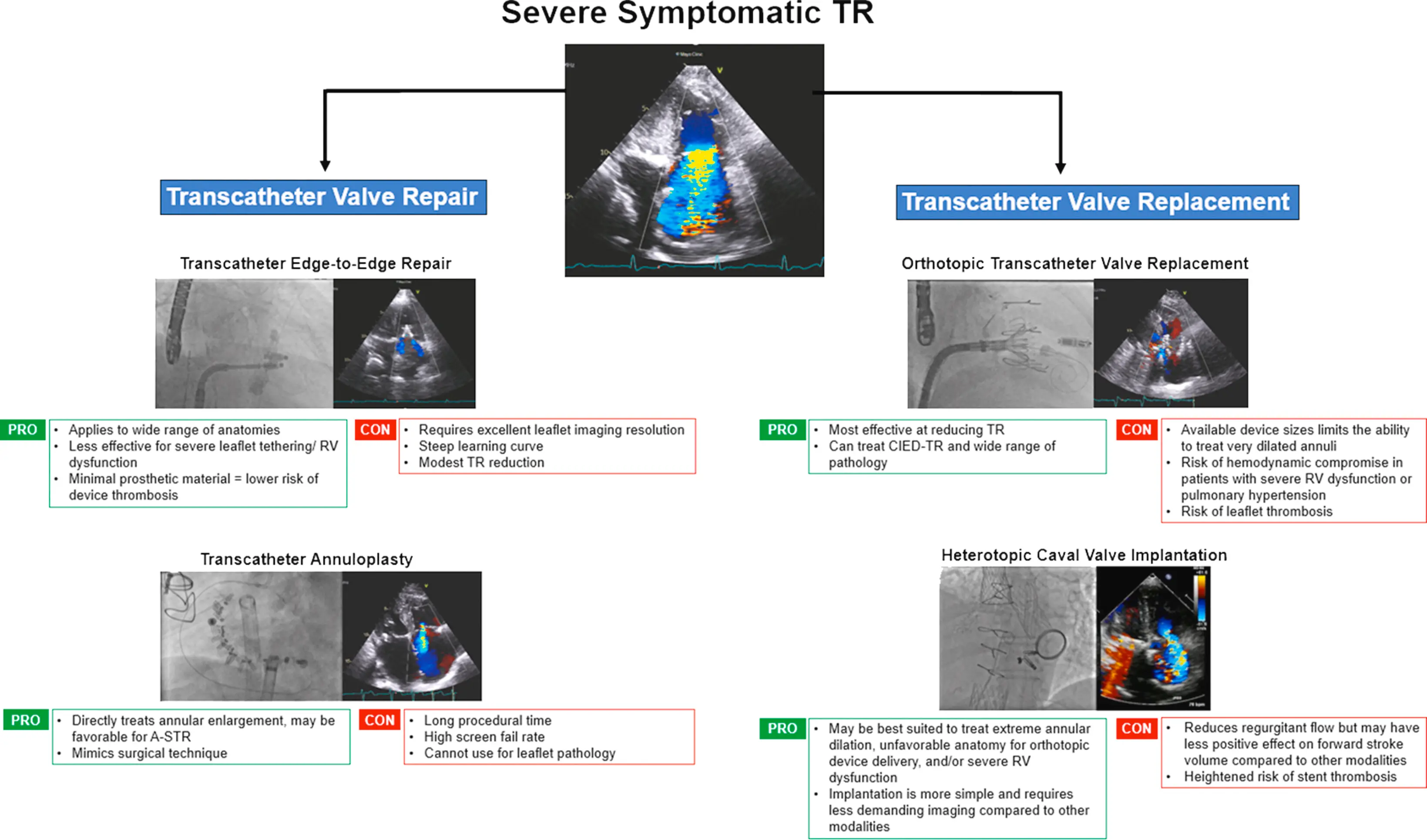- Patients with TR commonly have coexisting conditions including HF, pulmonary hypertension, chronic lung disease, AFib, and cardiovascular implantable electronic devices
- Secondary TR (80%) is much more common than primary TR (5-10%). The remainder are related to CIED leads (10-15%). 1
- ⚠️ When tricuspid regurgitation (TR) is severe, estimation of PASP derived from the tricuspid regurgitant jet and an estimate of right atrial pressure method may be less accurate.
TR Phenotypes
1 proposed TR phenotypes include 4 classes: atrial secondary TR (A-STR), ventricular secondary TR (V-STR), CIED-related TR, and primary TR with primary prolapse and primary right heart disease as subgroups

Primary TR
- Primary TR is defined as a defect of the valvular apparatus in the leaflets and chordae caused by either myxomatous prolapse, congenital heart disease, rheumatic heart disease, infective endocarditis, carcinoid heart disease, infiltrative valve disease, or iatrogenic mechanisms including RV biopsy. 1
Secondary TR
- Secondary TR, aka functional TR, is characterized by normal leaflets that are separated, tented, or tethered through a variety of mechanisms including annular dilatation, and RV enlargement and dysfunction. 1
- Specific etiologies of secondary TR include left ventricular systolic dysfunction, RV dysfunction from any cause, chronic lung disease, PH, myocardial disease, and AF. 1
Echo
- Parameters that signify severe TR are:
- VCW ≥0.7 cm
- PISA radius >0.9 cm
- EROA of ≥0.40 cm2
- RVol ≥45 mL
 Figure source: 1
Figure source: 1
Management
Severe, Symptomatic TR
 Figure source: 1
Figure source: 1
Valve Intervention
 Figure source: 1
Figure source: 1
Footnotes
-
Welle GA, Hahn RT, Lindenfeld J, Lin G, Nkomo VT, Hausleiter J, Lurz PC, Pislaru SV, Davidson CJ, Eleid MF. New Approaches to Assessment and Management of Tricuspid Regurgitation Before Intervention. JACC Cardiovasc Interv. 2024 Apr 8;17(7):837-858. doi: 10.1016/j.jcin.2024.02.034. PMID: 38599687. ↩ ↩2 ↩3 ↩4 ↩5 ↩6 ↩7 ↩8